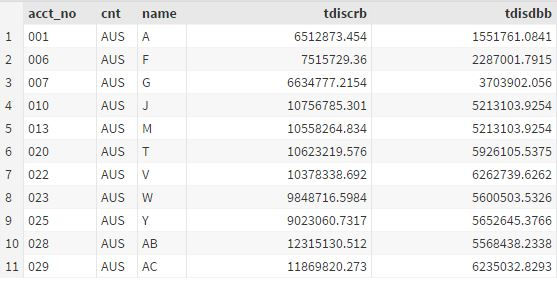SAS Algorithms
SAS is a statistical software developed by SAS institute for the purpose of advanced analytics, multivariate analyses, business intelligence, data management and predictive analytics.
Here are some SAS codes that I have written for model building purpose in the banking industry based on my experience as a credit risk modeller intern.
Please note that all data sets and methodologies used here are just simulated examples that reflect the banking inudtsry as the real- world data sets and methodologies could not be revealed due to privacy rights.
Here are 2 input data sets that I have simulated to start with:
Code that generates the following input data sets: Input data.docx
1. Monthly loan borrower accounts (from Jan 2013 to Dec 2014)


2. Name of loan borrowers


Task 1:
-
Append monthly loan borrower accounts to yearly loan borrower accounts, sorted by account number then date
Code that generates the output data associated with task 1: Task 1.docx
Output data:

Task 2:
-
Append all yearly loan borrower accounts into one big data set
Code that generates the output data associated with task 2: Task 2.docx
Output data:

Task 3:
-
Merge the appended loan borrower accounts with the name of loan borrowers
Code that generates the output data associated with task 3: Task 3.docx
Output data:
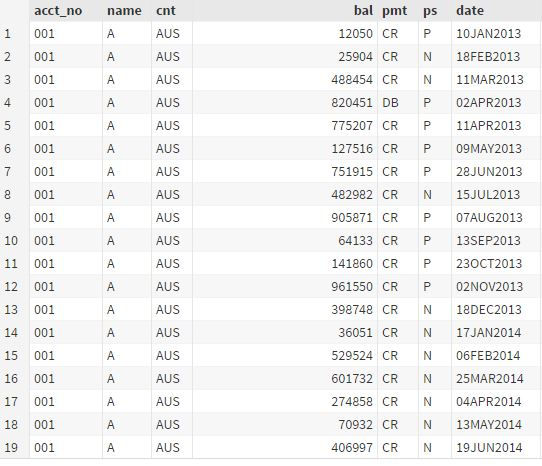
Task 4:
-
Output all default accounts.
-
Default accounts are recognised as accounts with ps = N consecutively for ≥ 8 times.
Code that generates the output data associated with task 4: Task 4.docx
Output data:
The default accounts are identified as followed:

Task 5:
-
Extract the very first default date of those default accounts
Code that generates the output data associated with task 5: Task 5.docx
Output data:
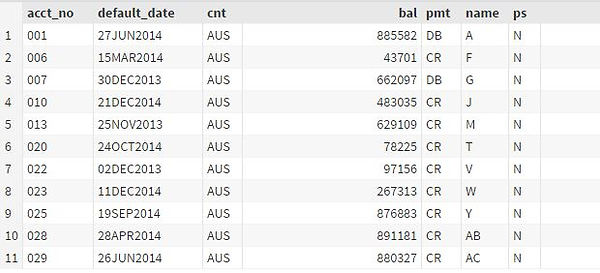
Task 6:
-
Track the discounted CR and DB outstanding balances of those accounts up to the default date.
-
Discounting to Jan 2013. Discount factor is 12%
Code that generates the output data associated with task 6: Task 6.docx
Output data:
Column 1- column 8

Column 8 – column 11
{ dcrbaln: discounted CR outstanding balance n month(s) from Jan 2014 }
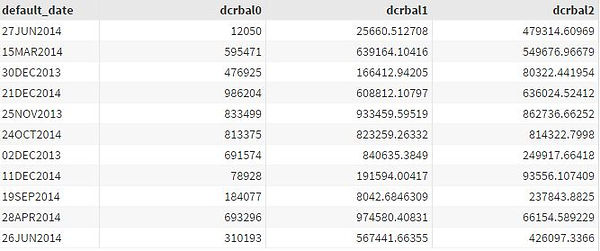
Column 12 – column 15
{ dcrbaln: discounted CR outstanding balance n month(s) from Jan 2014 }
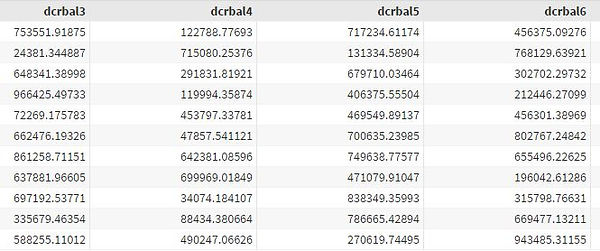
Column 62 – column 65
{ ddbbaln: discounted DB outstanding balance n month(s) from Jan 2014 }
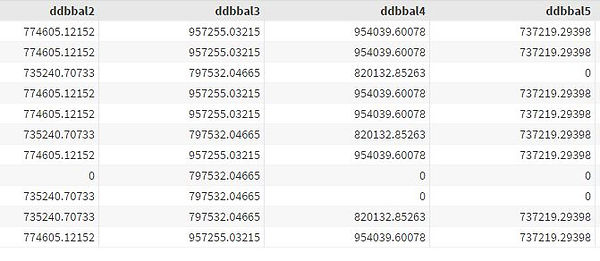
Task 7:
-
Summing all discounted CR and DB outstanding balances of all default accounts
Code that generates the output data associated with task 7: Task 7.docx
Output data:
{ tdiscrb: Total discounted CR outstanding balance }
{ tdiscrb: Total discounted DB outstanding balance }
